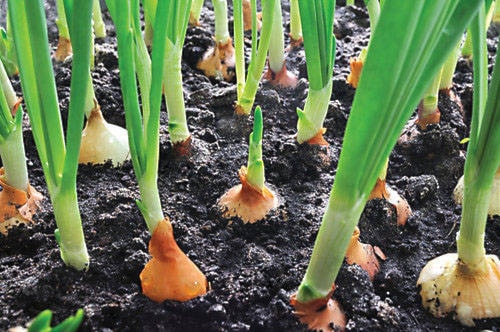By Mary and David Lowther
Most gardening books were written for those poor souls back east. You know, the Far Back East, not the folks east of Hill 60, but the ones on the wrong side of the Rockies where they have winter every year.
Their summers aren’t anything to crow about, either, but you won’t catch me telling them how good we have it out here; it’s already crowded enough, so I offer them no encouragement to emigrate from their bleak and insect infested homes to our particular heaven.
David, on the other hand, lies like a candidate in heat. I have stood silent while he explains that it always rains, except during fire season, when the feral lizards are especially aggressive and outrageously hungry. He mentions the earthquakes and fault lines every second sentence. How people living in the godless wastes of North Ontario can consider that discouraging is beyond me, but David keeps trying.
But I digress. Last winter the snow hung around the upper Cowichan for longer than usual, but prairie folks laughed when we said it was cold. THEY can only grow food during mosquito/poor sledding season, so they must grow everything during this time and then spend many days preserving the harvest for winter. We can still grow crops all winter if we have a plan.
Crops like leeks, Brussels sprouts, kale, turnips and daikon radishes will stand up well all winter. If you haven’t seeded overwintering vegetables yet, give them a try now and fall season might be long enough to give them a good start before it gets too cold for growth. In this heat, we’re more likely to sprout successfully in flats indoors where we can water more frequently and keep them out of the sun and away from hungry insect jaws. We want overwintering crops to grow just a few inches — enough to develop root systems that will carry them through to spring and remain short enough to withstand heavy winter rains. Make sure the varieties you sow are labelled “overwintering”, because these are specially bred not to bolt the next spring like the first onions I tried.
If you have a handle on the slug and sow bug situation you can grow greens like chard, spinach and lettuce all winter in an insulated cold frame. So far I’ve been irritatingly unsuccessful. David built me a lovely cold frame and nothing I’ve done so far has prevented those voracious, ugly gastropods from annihilating every green leaf with the notable exception of chicory, which only goes to show that even slugs and sow bugs have a discriminating palate. I welcome suggestions from those whose success with these spawn of the devil exceeds my own.
Now would also be a good time to start herbs that you want to grow indoors through the winter. Re-pot them as they grow bigger, put them in a sunny window and fertilize every month or so with something that doesn’t smell bad. David draws the line at fish fertilizer so I keep a small watering can by the kitchen sink that I pour leftover fluids like tea and vegetable cooking water into. As it gets filled up it ferments a bit and the indoor plants love it. After reading about the value of fermented foods lately, I bet this stuff would be good for humans too, but I probably couldn’t convince David to drink it. I don’t understand his reluctance to step beyond his “yuck” factor, given his ancestors’ predilection for gefilte fish, a substance so noxious it should be specifically listed in the Geneva Conventions. Perhaps if I added some chocolate sauce…
Please contact mary_lowther@yahoo.ca with questions and suggestions since I need all the help I can get.
